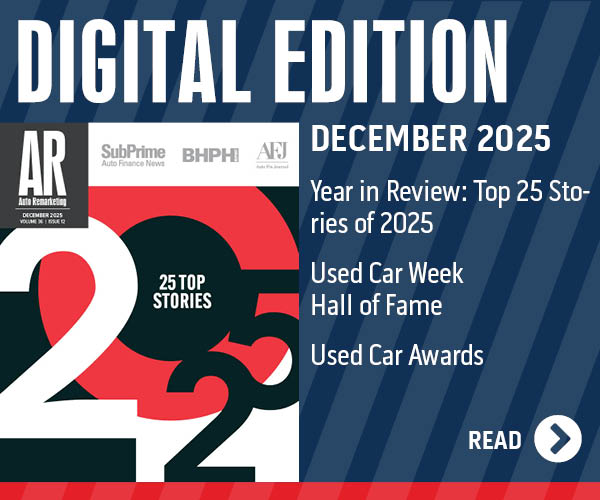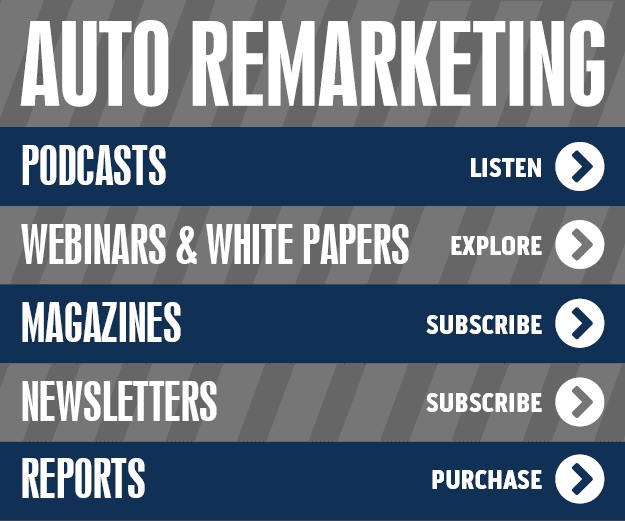COMMENTARY: Are you ready for the coming demand for used vehicles?

By subscribing, you agree to receive communications from Auto Remarketing and our partners in accordance with our Privacy Policy. We may share your information with select partners and sponsors who may contact you about their products and services. You may unsubscribe at any time.
It’s about to become really interesting in the used-vehicle market.
Between the limited supply of 3- to 5-year-old cars due to the COVID shutdowns from the early 2020s, and the coming tariffs, which will drive up new-vehicle costs and send people looking for deals on used ones, there is a coming wave of consumers looking for used vehicles. The question is, is your dealership ready?
If not, here are three steps you can take now to ensure you are ready to meet the demand and maximize your margin and profits.
Have the right inventory
Having the right inventory is paramount, and it means more than just having cars on the lot; it’s about stocking vehicles that align with current market trends and local customer preferences. Dealerships should leverage market data analytics and historical sales information to forecast demand. Consider factors like popular models, desired trim levels, fuel efficiency, and emerging segments like electric vehicles or specific SUV categories.
By proactively acquiring in-demand used vehicles through various sourcing channels and aligning new car orders with predicted trends, dealerships can ensure they have the cars customers want, reducing holding costs on slow-moving units and capitalizing on high-demand vehicles to improve margins.
Subscribe to Auto Remarketing to stay informed and stay ahead.
By subscribing, you agree to receive communications from Auto Remarketing and our partners in accordance with our Privacy Policy. We may share your information with select partners and sponsors who may contact you about their products and services. You may unsubscribe at any time.
Accurate data on the vehicle
Secondly, having accurate data builds trust and streamlines the sales process. Consumers nowadays are well-researched, but providing comprehensive and transparent vehicle histories, including service records, accident reports, and precise specifications, can help build trust between your store and the customer.
Detailed reconditioning reports and clear information about any warranties for used vehicles add significant value. This accuracy extends to pricing, reflecting the vehicle’s condition, features, and market value. Find a good software solution that can locate and print the original OEM window sticker, Transparent and reliable data not only helps justify the price and maximize margin but also enhances customer satisfaction and reduces the likelihood of post-sale disputes, ultimately protecting profits.
Quicker time to line
Finally, a quicker time to line — the speed at which a newly acquired vehicle is reconditioned, photographed, and made available for sale (online and on the lot) — directly impacts profitability. The longer a car sits in reconditioning, the higher the holding costs and the greater the risk of market depreciation.
Streamlining the recon process with efficient workflows, dedicated reconditioning staff, and leveraging technology for faster inspections and parts ordering can significantly reduce this turnaround time. A swift “time to line” means inventory can be turned over faster, allowing dealerships to capitalize on current market conditions and sell vehicles at optimal price points, thus maximizing both sales volume and profit margins.
By taking these three steps, you will ensure your dealership is ready for the coming wave of used vehicle buyers and hopefully offset any dip in the new vehicle market that may come. Either way, you’ll be set to get the vehicles ready quicker, more accurately, and with a better customer experience that will help drive more revenue at your store.
Euwart Anderson is the General Manager of Vehlo’s Dealership Division, leading the performance, strategic direction, and growth of Dealerlogix, Text2Drive, eAdvisor, RapidRecon, and Velocity Automotive.


